Welcome to our free classical music site

Do you write about classical music? Are you a blogger? Want to team up with Classical Connect? Send us a message, let's talk!

Do you write about classical music? Are you a blogger? Want to team up with Classical Connect? Send us a message, let's talk!
June 26, 2017. Beethoven, Symphony No. 7. Below is the article by Joseph DuBose on Beethoven’s Symphony no.7. As always with Beethoven’s symphonies, our problem was in selecting a recording to illustrate it: there are myriads in existence, many of superb quality. We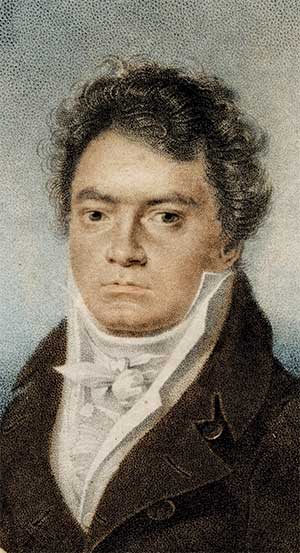 chose a remastered live recording made by Carlos Kleiber with the Vienna Philharmonic orchestra in 1976. You can listen to it here. ♫
chose a remastered live recording made by Carlos Kleiber with the Vienna Philharmonic orchestra in 1976. You can listen to it here. ♫
Symphony No. 7 in A major
Beethoven completed the Symphony No. 7 in 1812. Four years separated it from the “Pastoral”—the longest span between any of the symphonies thus far. Yet, that interval does not mark a period of lesser creativity in Beethoven’s career. Many important works appeared during that time, including two string quartets (opp. 74 and 95), the music for “Egmont,” “King Stephen,” and the “Ruins of Athens,” the Choral Fantasia, and the F-sharp minor and “Les Adieux” piano sonatas.
Beethoven’s style continued to advance during this period. With each decisive step he brought music closer to embodying the deepest expressions of the human soul. Thus far, his music had embodied the grand, the lofty, the profound, and, quite remarkably, was largely uninfluenced by the day-to-day events of the composer's life. What Beethoven had not yet explored, at least in his symphonies, was humor. Beethoven had always indulged in coarse jokes, puns, and nicknames, but in his later years, his humor became even more pronounced. He even had a special word for his unique, off-putting behavior: aufgeknöptf, or “unbuttoned.” In one such instance of this behavior, Beethoven, when visiting his friend Breuning, would, if having just come in from the rain, take off his hat and dash water off it in all possible directions, without the slightest regard for what furniture or people may have been nearby. Another example involved his brother. When Johann left a card for Beethoven that read, “Johann van Beethoven, Landed proprietor,” Beethoven quickly responded with his own: “Ludwig van Beethoven, Brain proprietor.” Though brief glimpses of this rough humor can be found as early as the Second Symphony, Beethoven had not yet allowed it an outlet in his music until the composition of the A major Symphony.
Besides allowing his “unbuttoned” humor a musical outlet, Beethoven composed the Seventh Symphony during a particularly happy time for the composer. As was his habit, the composer left Vienna during the summer months for the countryside, where he sketched out his compositions that would later be put into their final form once he returned to Vienna for the winter. In the summer of 1811, he ventured farther from the Austrian capital than usual, to Teplitz, roughly fifty miles from Prague. There, he enjoyed a vibrant confluence of intellectuals and musicians, among them the Sebald family; the actor Ludwig Lowe; Johann Fichte, a founding figure of German idealism; and the poet Christoph Tiedge. Afternoons and evenings were spent with great fellowship, and Beethoven, against his usual manner, even obliged to extemporize at the piano.
Once completed, the Seventh Symphony was premiered on December 8, 1813 at a concert in Vienna given to benefit the soldiers wounded at the battle of Hanau, where Austrian and Bavarian troops attempted to cut off Napoleon’s retreat from Leipzig. The program also included Beethoven’s “Battle Symphony” in honor of the British victory over Napeleon at Vittoria. Among the orchestra were some of the most prominent musicians of the day—Schuppanzigh, Romberg, Spohr, Dagonetti, Meyerbeer, Hummel, and Salieri. Beethoven himself conducted the concert, though probably more to the performance’s detriment than advantage due to the advanced stage of his deafness by this time. Yet, the Symphony No. 7 was received with great praise; the Allegretto even was encored. A repeat performance on the 12th of the same month met with equal success. The work, however, did not fare as well in North Germany. When it was premiered in Leipzig, Friedrich Wieck, father of Clara Wieck, criticized the symphony, remarking that it could have only been composed in a “drunken state.” Regardless, the Seventh now is staple of the symphonic repertoire, and, along with the Eroica and the Fifth, one of the most oft-performed of Beethoven’s symphonies. Beethoven himself was particularly fond of the work, and twice referred to it as one of his best works. (To continue reading, please click here)Permalink
June 19, 2017. A Stamitz and a Bach. Johann Stamitz was born on this day in 1717 in a small town of Německý Brod (German Ford in the Czech) in Moravia, then part of the Austrian Empire. He studied in the Jesuit Gymnasium in Jihlava known across Europe for its high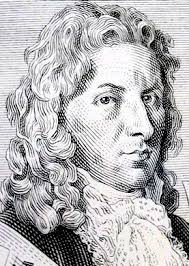 quality of musical education. He then studied at Prague University and then, it’s assumed, embarked on a career of a violin virtuoso. Sometime around 1741 Stamitz was hired by the Mannheim court of the Elector of Palatinate. At the time, the court had an excellent orchestra. In June of 1742 he played at a concert and, according to the advertisement, was to perform on the violin, viola d’amore, cello and double bass. His rise was very quick: a year later he became the first violinist of the court orchestra, in 1745 – the Konzertmeister and in 1750 – director of instrumental music. As such he was responsible for both composing and performing music for the court. Under the leadership of Stamitz the orchestra improved even further, both technically and musically, becoming the most renowned orchestra in Europe. In 1754, Stamiz went to Paris and stayed there for a year. He performed, to great acclaim, in private residences of the nobility and also at the Concert Spirituel at the Tuileries Palace, the first ever public concert series. Stamiz returned to Mannheim in the fall of 1755. Two years later, on March 27th of 1757, he died at the age of 39. Johann Stamitz, had two composer sons who became as well known as their father, and is mostly famous for his symphonies (he wrote 58 of them) and his orchestral trios. Here is his Pastorale Symphony. Virtuosi di Praga are conducted by Oldřich Vlček.
quality of musical education. He then studied at Prague University and then, it’s assumed, embarked on a career of a violin virtuoso. Sometime around 1741 Stamitz was hired by the Mannheim court of the Elector of Palatinate. At the time, the court had an excellent orchestra. In June of 1742 he played at a concert and, according to the advertisement, was to perform on the violin, viola d’amore, cello and double bass. His rise was very quick: a year later he became the first violinist of the court orchestra, in 1745 – the Konzertmeister and in 1750 – director of instrumental music. As such he was responsible for both composing and performing music for the court. Under the leadership of Stamitz the orchestra improved even further, both technically and musically, becoming the most renowned orchestra in Europe. In 1754, Stamiz went to Paris and stayed there for a year. He performed, to great acclaim, in private residences of the nobility and also at the Concert Spirituel at the Tuileries Palace, the first ever public concert series. Stamiz returned to Mannheim in the fall of 1755. Two years later, on March 27th of 1757, he died at the age of 39. Johann Stamitz, had two composer sons who became as well known as their father, and is mostly famous for his symphonies (he wrote 58 of them) and his orchestral trios. Here is his Pastorale Symphony. Virtuosi di Praga are conducted by Oldřich Vlček.
Johann Stamitz was three years younger than Carl Philipp Emanuel Bach and 15 years older than another son of J.S. Bach, Johann Christoph Friedrich Bach. Johann Christoph was born this week, on June 21st of 1732 in Leipzig, where his famous father was the Thomaskantor. Johann Sebastian was his son’s first music teacher, and, as many of Johann Sebastian’s sons, Johann Christoph attended the Thomasschule (St. Thomas School). Not as famous as his brothers Wilhelm Friedemann, Carl Philipp Emanuel, or Johann Christian, he was a fine composer and a virtuoso keyboard player. Johann Christoph is sometimes called the "Bückeburg Bach" as he spent many years in Bückeburg, the capital of the County of Schaumburg-Lippe. Here is Johann Christoph’s virtuosic Piano Concerto E Major. It’s performed by the wonderful Cyprien Katsaris. Orchestre de Chambre du Festival d`Echternach is conducted by Yoon Lee.Permalink
June 12, 2017. Stravinsky, Pleyel. Igor Stravinsky, one of the most influential composers of the 20th century, was born on June 17th of 1882 in Oranienbaum (now Lomonosov) outside of Saint Petersburg. For years, as we celebrated Stravinsky, we were traversing his life in its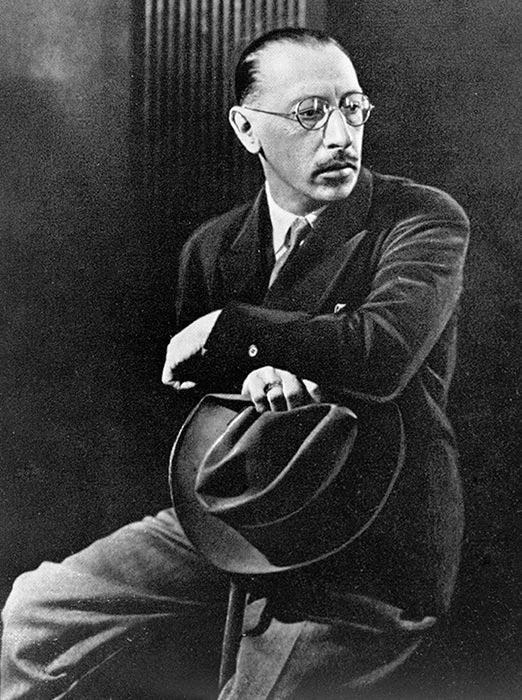 amazing transmutations. We’ve mentioned it before, but one can think of only one other artist who could change his creative styles so drastically and succeeded so enormously in every one of them – and that’s Picasso. Last year we wrote about one of Stravinsky’s most successful neoclassical pieces, his ballet Apollo. Apollo was composed early in 1928. Stravinsky was living in France and leading, at least on a personal level, a double life: while still married to Catherine (Katya) Nosenko, mother of his four children, he had since 1921 been carrying on an affair with Vera de Bosset, then the wife of the painter Sergei Sudeikin (Vera would leave Sudeikin a year later). Stravinsky bought a house in Anglet just outside of Biarritz and moved his family there. When not visiting Anglet, he lived in Paris with Vera. Katya knew about the affair but didn’t do anything about it. Stravinsky stayed married to Katya for the remainder of her life; the last years were very unhappy. Some years earlier Katya had contracted tuberculosis, which had developed slowly, but in 1938 she infected both Igor and their daughter Lyudmila. Lyudmila died in 1930 at the age of 30, Catherine – three months later, in March of 1939. Igor spent several months in a hospital but recovered.
amazing transmutations. We’ve mentioned it before, but one can think of only one other artist who could change his creative styles so drastically and succeeded so enormously in every one of them – and that’s Picasso. Last year we wrote about one of Stravinsky’s most successful neoclassical pieces, his ballet Apollo. Apollo was composed early in 1928. Stravinsky was living in France and leading, at least on a personal level, a double life: while still married to Catherine (Katya) Nosenko, mother of his four children, he had since 1921 been carrying on an affair with Vera de Bosset, then the wife of the painter Sergei Sudeikin (Vera would leave Sudeikin a year later). Stravinsky bought a house in Anglet just outside of Biarritz and moved his family there. When not visiting Anglet, he lived in Paris with Vera. Katya knew about the affair but didn’t do anything about it. Stravinsky stayed married to Katya for the remainder of her life; the last years were very unhappy. Some years earlier Katya had contracted tuberculosis, which had developed slowly, but in 1938 she infected both Igor and their daughter Lyudmila. Lyudmila died in 1930 at the age of 30, Catherine – three months later, in March of 1939. Igor spent several months in a hospital but recovered.
But that was still to come. In the meantime, in 1928, following the success of Apollo, Ida Rubinstein, a famous danseuse, commissioned Stravinsky for another ballet for her company. Rubinstein wanted a romantic tale, and Alexander Benois, a wonderful Russian painter who had collaborated with Stravinsky (and Diagilev) on a number of projects, came up with the idea to base the ballet on the music of Tchaikovsky. Stravinsky liked it; what came out of it was Le baiser de la fée (The Fairy's Kiss), a wonderfully inventive one-act ballet. Bronislava Nijinska was the choreographer; the ballet premiered in November of 1938, marking the 35th anniversary of Tchaikovsky’s death. It’s interesting to compare two masterpieces, Apollo and The Fairy's Kiss, written just months apart – the apollonian stillness of the former and the inventive brilliancy of the latter. In 1934 Stravinsky wrote a “Divertimento” – a suite based on the music of the ballet. You can listen to it here. The Bulgarian National Radio Symphony is conducted by Mark Kadin.
While in Paris, Stravinsky found an interesting source of income: writing arrangements for the piano manufacturer Pleyel. The company had recently designed a piano player they called Pleyela and Stravinsky used its ability to play notes beyond the capacity of a human pianist. By the late 1920, Playel was one of the major piano manufacturers in Europe, on par with Bechstein, Bösendorfer and the Hamburg Steinway. The company was started by Ignaz Pleyel, a composer and piano maker, whose birthday we also mark this week. Pleyel was born on June 18th of 1757 in Ruppersthal, Austria. He moved to Strasbourg, Alsace, and eventually to Paris. A prolific composer of many symphonies, quartets, etc., he didn’t leave a lasting mark, although he was well-received in England, which he toured the same time as his friend Haydn. The field he really excelled in was business. First, he established a successful music printing business, and then, in 1807, Pleyel et Cie, a piano manufacturer. They were the first to introduce a metal frame and make an upright piano (or “pianino,” as they called it). Chopin played Pleyels, and so did many other French pianists and composers. Working with Wanda Landowska, they introduced the modern harpsichord. And we shouldn’t forget their contribution to the performing scene: the company commissioned the original small Salle Pleyel and its replacement, the modern concert hall which serves as the home base to the Orchestre de Paris Orchestre Philharmonique de Radio France. Igor Stravinsky was one of the conductors of the inauguration concert.Permalink
June 6, 2017. The Cliburn update. The semifinal results were announced last night and both Daniel Hsu and Georgy Tchaidze made it into the final round. Congratulations to both! In the final round they will perform a piano quintet (Daniel will play Franck’s Piano Quintet and Georgy – Dvořák’s Quintet op. 81) and then a concerto. Daniel will play Tchaykovsky’s no. 1, while Georgy will perform Prokofiev’s Piano concerto no. 3. Good luck and break a leg!
June 5, 2017. The Cliburn and the IMF. The 2017 Van Cliburn International Piano Competition is entering its final round: the six finalists will be announced later today. Every lover of classical music in this country is aware of the Cliburn, the premier piano competition organized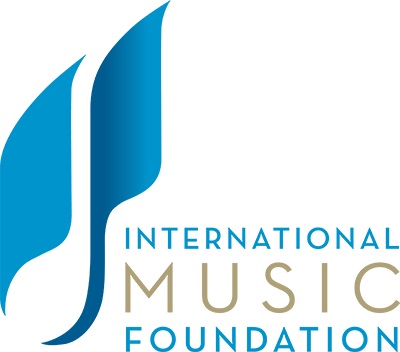 by the late Van Cliburn in 1962, four years after he won the first Tchaikovsky competition in Moscow. Many of the Cliburn winner and even participants who didn’t get top prizes went on to develop great careers: Nikolai Petrov, Radu Lupu, Rudolf Buchbinder, Cristina Oriz, Vladimir Viardo, Barry Douglas, Olga Kern, Aleksey Sultanov, to name just a few. While the Cliburn is known worldwide, the International Music Foundation, a Chicago organization that presents high-quality music performances by emerging artists and supports music education in the area, isn’t well known even in its home city. And yet, Chicagoans can listen live to some of the best young pianists who are today performing in Fort Worth: the flagship program of the IMF is the Dame Myra Hess Memorial Concerts, and many of its “alumni” went on to participate in and win major music competitions. This year, three such musicians, Daniel Hsu, Georgy Tchaidze and Rachel Kudo played at the Cliburn. All three made it to the quarterfinals, while Hsu and Tchaidze went a step further, to the semifinals. Today we’ll find out if they make it into the final round. The 19-year-old Daniel Hsu is a native of San-Francisco. At the age of 10 he was accepted to the Curtis Institute of Music where he studied with Garry Graffman and Eleanor Sokoloff. He was named a Gilmore Young Artist in 2016 and a year later played a concert at Carnegie Hall. In the preliminary round of the Cliburn, Daniel
by the late Van Cliburn in 1962, four years after he won the first Tchaikovsky competition in Moscow. Many of the Cliburn winner and even participants who didn’t get top prizes went on to develop great careers: Nikolai Petrov, Radu Lupu, Rudolf Buchbinder, Cristina Oriz, Vladimir Viardo, Barry Douglas, Olga Kern, Aleksey Sultanov, to name just a few. While the Cliburn is known worldwide, the International Music Foundation, a Chicago organization that presents high-quality music performances by emerging artists and supports music education in the area, isn’t well known even in its home city. And yet, Chicagoans can listen live to some of the best young pianists who are today performing in Fort Worth: the flagship program of the IMF is the Dame Myra Hess Memorial Concerts, and many of its “alumni” went on to participate in and win major music competitions. This year, three such musicians, Daniel Hsu, Georgy Tchaidze and Rachel Kudo played at the Cliburn. All three made it to the quarterfinals, while Hsu and Tchaidze went a step further, to the semifinals. Today we’ll find out if they make it into the final round. The 19-year-old Daniel Hsu is a native of San-Francisco. At the age of 10 he was accepted to the Curtis Institute of Music where he studied with Garry Graffman and Eleanor Sokoloff. He was named a Gilmore Young Artist in 2016 and a year later played a concert at Carnegie Hall. In the preliminary round of the Cliburn, Daniel  played Beethoven’s 31st piano sonata. Earlier this year, he played the same sonata at the Dame Myra Hess concert; you can listen to it here. In the quarterfinals, he played Bach’s Chaconne from the violin Partita in d minor, BWV 1004, arranged for the piano by Ferruccio Busoni. You can listen to it in a live recording, here.
played Beethoven’s 31st piano sonata. Earlier this year, he played the same sonata at the Dame Myra Hess concert; you can listen to it here. In the quarterfinals, he played Bach’s Chaconne from the violin Partita in d minor, BWV 1004, arranged for the piano by Ferruccio Busoni. You can listen to it in a live recording, here.
Georgy Tchaidze was born in Saint Petersburg and studied at the Moscow Conservatory with Sergey Dorensky. He then moved to Berlin where he continued his studies with Klaus Hellwig at the Berlin University of the Arts. Georgy is a winner of several international competitions and performed across Europe, North America and China. Here he’s collaborating with the German-Korean violinist Clara-Jumi Kang in Johannes Brahms’s Sonata No. 1 for Violin and Piano, Op. 78 in G Major.
Rachel Kudo was born in Washington DC. She attended the Juilliard and currently works with Leon Fleisher. She also studied with Joseph Kalichstein, Richard Goode, and Gilbert Kalish. Like Daniel Hsu, Ms. Kudo is a winner of the Gilmore Young Artist Award and a two-time winner of the Gina Bachauer International Piano Competition. It so happens that we have her recording of Johannes Brahms’s Sonata No. 2 for Violin and Piano in A Major, Op. 100, which she performed with the violinist Siwoo Kim. It’s a fine compliment to Brahms’s first violin sonata. You can listen to Violin Sonata no. 2 here.
Robert Schumann was born this week, on June 8th of 1810. We’ll celebrate him another time.Permalink
May 29, 2017. A different Les Six. No less than six noted composers were born this week. None of them arrived at the pinnacle of their profession, but all six are very interesting in one way or another. Chronologically, the composers are: Georg Muffat, Marin Marais, Mikhail Glinka,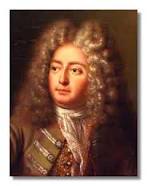 Edward Elgar, Isaac Albéniz and Erich Wolfgang Korngold. Muffat and Marais were born just three years apart: Muffat on June 1st of 1653 and Marais – on May 31st of 1656. They even had the same teacher, Jean-Baptiste Lully. In all other respects, their lives and their music were very different. Muffat, of Scottish and French descent, led a peripatetic life. Born in the Duchy of Savoy, he studied in Paris, then worked in Alsace before settling in Vienna. From there he traveled to Prague and, eventually, Salzburg. There he worked for the archbishop, as Mozart would 100 years later. After a ten year stay in Salzburg he went to Rome where he met Arcangelo Corelli and many other famous musicians of the day. He returned to Salzburg two years later but didn’t stay long. He moved to Augsburg, Bavaria, and later – to Passau, where he lived the remaining years of his life. He died in Passau, 50 years of age, on February 23rd of 1704. Marais, on the other hand, was born in Paris and died in Paris. He went to the choir school of St Germain-l'Auxerrois, one of the best music schools in Paris. He studied the viol with several teachers, one of whom was the famous player Sainte-Colombe (it’s said that Marais surpassed him after six months of study). He was invited to play at the orchestra of the Opera, where Lully was the music director. As composer, he wrote mostly for his instrument, the viol, eventually writing five books of Pièces de viole. Some of his pieces were performed in Versailles and were well received. He became a conductor of the opera around 1706 (the official title of the conductor was “batteur de mesure” – the one who beats the measure; that was the extent of conducting in the early 18th century, and that’s also what lead to Lully’s demise, when he hit his foot with the conducting staff and died of the gangrene several days later). Here is Marais, Le Labyrinthe, from Suitte d'un gout etranger, which in turn is from Book IV of PiècesDe Viole. Jordi Savall and friends are performing. As for Muffat, we’ll hear a piece from the second set of suites which Muffat gave the Latin name of Florilegium (“Selection”). He wrote two sets, Florilegium Primum and Florilegium Secundum, each set consisting of several suites of dances. Here is the second suite from Florilegium Secundum subtitled Laeta Poesis. You may hear some Lully in it, but it also anticipates Handel. The Academy of Ancient Music is conducted by Christopher Hogwood.
Edward Elgar, Isaac Albéniz and Erich Wolfgang Korngold. Muffat and Marais were born just three years apart: Muffat on June 1st of 1653 and Marais – on May 31st of 1656. They even had the same teacher, Jean-Baptiste Lully. In all other respects, their lives and their music were very different. Muffat, of Scottish and French descent, led a peripatetic life. Born in the Duchy of Savoy, he studied in Paris, then worked in Alsace before settling in Vienna. From there he traveled to Prague and, eventually, Salzburg. There he worked for the archbishop, as Mozart would 100 years later. After a ten year stay in Salzburg he went to Rome where he met Arcangelo Corelli and many other famous musicians of the day. He returned to Salzburg two years later but didn’t stay long. He moved to Augsburg, Bavaria, and later – to Passau, where he lived the remaining years of his life. He died in Passau, 50 years of age, on February 23rd of 1704. Marais, on the other hand, was born in Paris and died in Paris. He went to the choir school of St Germain-l'Auxerrois, one of the best music schools in Paris. He studied the viol with several teachers, one of whom was the famous player Sainte-Colombe (it’s said that Marais surpassed him after six months of study). He was invited to play at the orchestra of the Opera, where Lully was the music director. As composer, he wrote mostly for his instrument, the viol, eventually writing five books of Pièces de viole. Some of his pieces were performed in Versailles and were well received. He became a conductor of the opera around 1706 (the official title of the conductor was “batteur de mesure” – the one who beats the measure; that was the extent of conducting in the early 18th century, and that’s also what lead to Lully’s demise, when he hit his foot with the conducting staff and died of the gangrene several days later). Here is Marais, Le Labyrinthe, from Suitte d'un gout etranger, which in turn is from Book IV of PiècesDe Viole. Jordi Savall and friends are performing. As for Muffat, we’ll hear a piece from the second set of suites which Muffat gave the Latin name of Florilegium (“Selection”). He wrote two sets, Florilegium Primum and Florilegium Secundum, each set consisting of several suites of dances. Here is the second suite from Florilegium Secundum subtitled Laeta Poesis. You may hear some Lully in it, but it also anticipates Handel. The Academy of Ancient Music is conducted by Christopher Hogwood.
Mikhail Glinka, born a century and a half later, on June 1st of 1804, occupies a special place in the history of Russian music. It’s not very often that we can identify the “first composer,” but that’s really what he was - the first authentically Russian composer. Of course, there were Russians composing secular music well before Glinka, Bortniansky and Berezovsky among them, but those, while quite gifted, mostly repeated the patterns of their Italian teachers. Glinka’s music, on the other hand, was original, he went to the Russian sources and created a melodic world that affected generations of composers to come, from the Mighty Five who followed him to Tchaikovsky and the more conservative Soviet composers of the 20th century. Here’s one of his better-known pieces, the Overture to the opera Ruslan and Lyudmila. Evgeny Mravinsky conducts the Leningrad Philharmonic Orchestra.
Edward Elgar and Isaac Albeniz were also born three years apart, Elgar on June 2nd of 1857, Albeniz – on May 29th of 1860. Both became “national composers,” Elgar almost officially, with his Pomp and Circumstance Marches being played at state events, Albeniz – purely by virtue of his music. Both deserve proper treatment, hopefully soon. And so does Erich Wolfgang Korngold, a child prodigy whose career never reached promised heights.Permalink